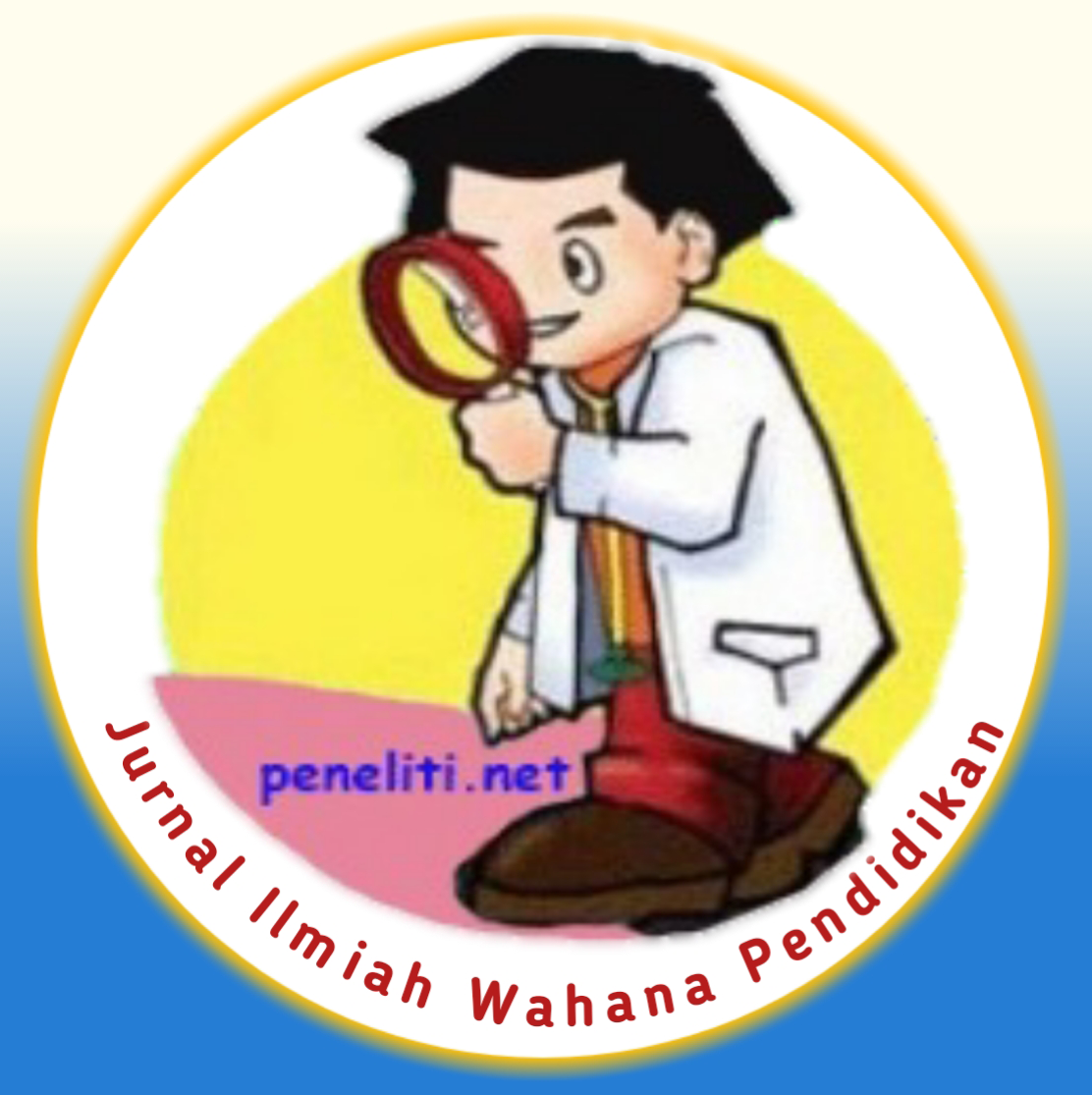Pengaruh Literasi Digital dan Media Youtube Terhadap Hasil Belajar Kimia
Abstract
Abstract:
The purpose of this study was to determine the effect of digital literacy and youtube media on chemistry learning outcomes. This research method is quantitative, the instrument used is a questionnaire. Population and sample of students of SMKN 1 Pulo Ampel class X all majors in the academic year 2021/2022 Odd, 80 students selected randomly as a sample. Data collection was carried out by distributing questionnaires and questionnaires. Data analysis with descriptive statistical methods, and multiple regression analysis. The results showed that there was an influence of digital literacy (X1) and youtube media (X2) on the learning outcomes of Chemistry (Y), this is evidenced by the regression calculation which shows the calculated F value > F table or 35.208 > 3.11 with the regression equation = -1.028 +0.597X1 +0.643X2. Furthermore, digital literacy variables and youtube media together can determine student learning outcomes 47.8% and are significant.
Keyword: Digital literacy, Youtube media, Chemistry learning outcome
References
Abdul Latip, & Nursida Sutantri. (2021). Profil Literasi Digital Siswa Kelas Xi Pada Pembelajaran Jarak Jauh Mata Pelajaran Kimia. Jurnal Pendidikan, 22(1), 35–45. https://doi.org/10.33830/jp.v22i1.884.2021
Amri, C. O., Jaelani, A. K., & Saputra, H. H. (2021). Peningkatan Literasi Digital Peserta Didik : Studi Pembelajaran Menggunakan E-Learning. Jurnal Ilmiah Profesi Pendidikan, 6(3), 1–6. https://doi.org/https://doi.org/10.29303/jipp.v6i3.291
Creswell, J. W. (2010). Research Design: Pendekatan Kualitatif, Kuantitatif, dan Mixed. Pustaka Pelajar: Yogyakarta.
Dornyei, Z., & Griffee, D. T. (2007). Research Methods in Applied Linguistics. Oxford University Press.
Faidah, M. N. (2021). Persepsi Mahasiswa tentang Literasi Digital di Media Sosial. 1(2), 90–99. https://doi.org/https://doi.org/10.53621/jider.v1i2.65
Falloon, G. (2020). From digital literacy to digital competence : the teacher digital competency ( TDC ) framework. Educational Technology Research and Development, 68(5), 2449–2472. https://doi.org/10.1007/s11423-020-09767-4
Fatty Faiqah, Muh. Nadjib, A. S. A. (2016). Youtube sebagai sarana komunikasi bagi komunitas makassarvidgram. Jurnal Komunikasi KAREBA, 5(2). https://doi.org/https://doi.org/10.31947/kjik.v5i2.1905
Fauziah, M., Hartati, T., & Damayanti, V. S. (2021). EFEKTIFITAS PENGAJARAN DARING MENGGUNAKAN MEDIA DIGITAL TERHADAP KEMAMPUAN MEMBACA PERMULAAN. JMIE: Journal of Madrasah Ibtidaiyah Education, 5(2), 238–248. https://doi.org/http://dx.doi.org/10.32934/jmie.v5i2.340
Fitriyani, & Mukhlis, S. (2021). Urgensi Penggunaan Digital Literasi dalam Pelaksanaan Pendidikan Dimasa Pandemi: Systematic Literature Review. Jurnal Dikoda, 1(1), 13–20.
Hamidah, M. (2020). PEMBELAJARAN MAHARAH AL-ISTIMA’ DENGAN MEMANFAATKAN MEDIA YOUTUBE: PROBLEMATIKA DAN SOLUSI. Al-Ta’rib Jurnal Ilmiah Program Studi Pendidikan Bahasa Arab, 8(2), 147–160. https://doi.org/https://doi.org/10.23971/altarib.v8i2.2282
I Gede Rasagama. (2020). PENGEMBANGAN MODEL PEMBELAJARAN GETARAN BERBASIS VIDEO YOUTUBE UNTUK MENINGKATKAN PEMAHAMAN KONSEP MAHASISWA POLITEKNIK. Jurnal Pendidikan Sains (JPS), 8(2), 91–101. https://doi.org/10.26714/jps.8.2.2020.91-101
Mawarni, P., Milama, B., & Sholihat, N. (2021). Persepsi Calon Guru Kimia Mengenai Literasi Digital Sebagai Keterampilan Abad 21. Jurnal Inovasi Pendidikan Kimia, 15(2), 2849–2862. https://doi.org/https://doi.org/10.15294/jipk.v15i2.28394
Narayana, I. W. G. (2016). Analisis Terhadap Hasil Penggunaan Metode Pembelajaran Synchronous Dan Asynchronous. Seminar Nasional Teknologi Informasi Dan Multimedia 2016 STMK AMIKOM Yogyakarta 6-7 Februari 2016, 6–7.
Rahayu, T., Mayasari, T., Huriawati, F., Studi, P., & Fisika, P. (2019). PENGEMBANGAN MEDIA WEBSITE HYBRID LEARNING BERBASIS KEMAMPUAN LITERASI DIGITAL DALAM DALAM PEMBELAJARAN FISIKA. Jurnal Pendidikan Fisika (JPF) Universitas Muhammadiyah Metro, VII(1). https://doi.org/http://dx.doi.org/10.24127/jpf.v7i1.1567
Salehudin, M. (2020). Literasi Digital Media Sosial Youtube Anak Usia Dini. Jurnal Ilmiah Potensia, 5(2), 106–115. https://doi.org/https://doi.org/10.33369/jip.5.2.%25p
Sugiyono. (2013). Metodelogi Penelitian Kuantitatif, Kualitatif Dan R&D. Bandung:Alfabeta.
Tri Padila Rahmasari, Dedi Futra, W. W. (2022). PENGGUNAAN YOUTUBE SEBAGAI MEDIA PUBLIKASI PROJECT BASED LEARNING PADA PEMBELAJARAN KIMIA DI SMAN PINTAR PROVINSI RIAU. Jurnal Pendidikan Kimia Universitas Riau, 7(1), 55–63. https://doi.org/http://dx.doi.org/10.33578/jpk-unri.v7i1.7814
Yessu, M. (2017). Analisis Literasi Digital Peserta Didik Melalui Pemanfaatan Media Pembelajaran Berbasis Android Smart Apps Creator (SAC) Dan Instagram Dalam Pembelajaran Koloid. Jurnal Riset Pendidikan Kimia, 7(1), 38–51. https://doi.org/DOI: https://doi.org/10.21009/JRPK.112.06 Analisis




